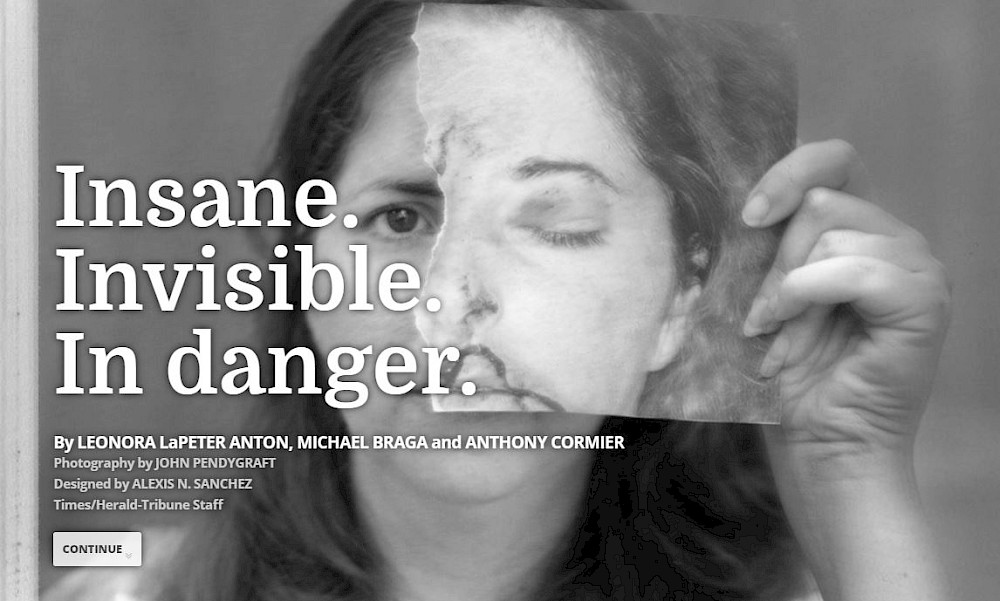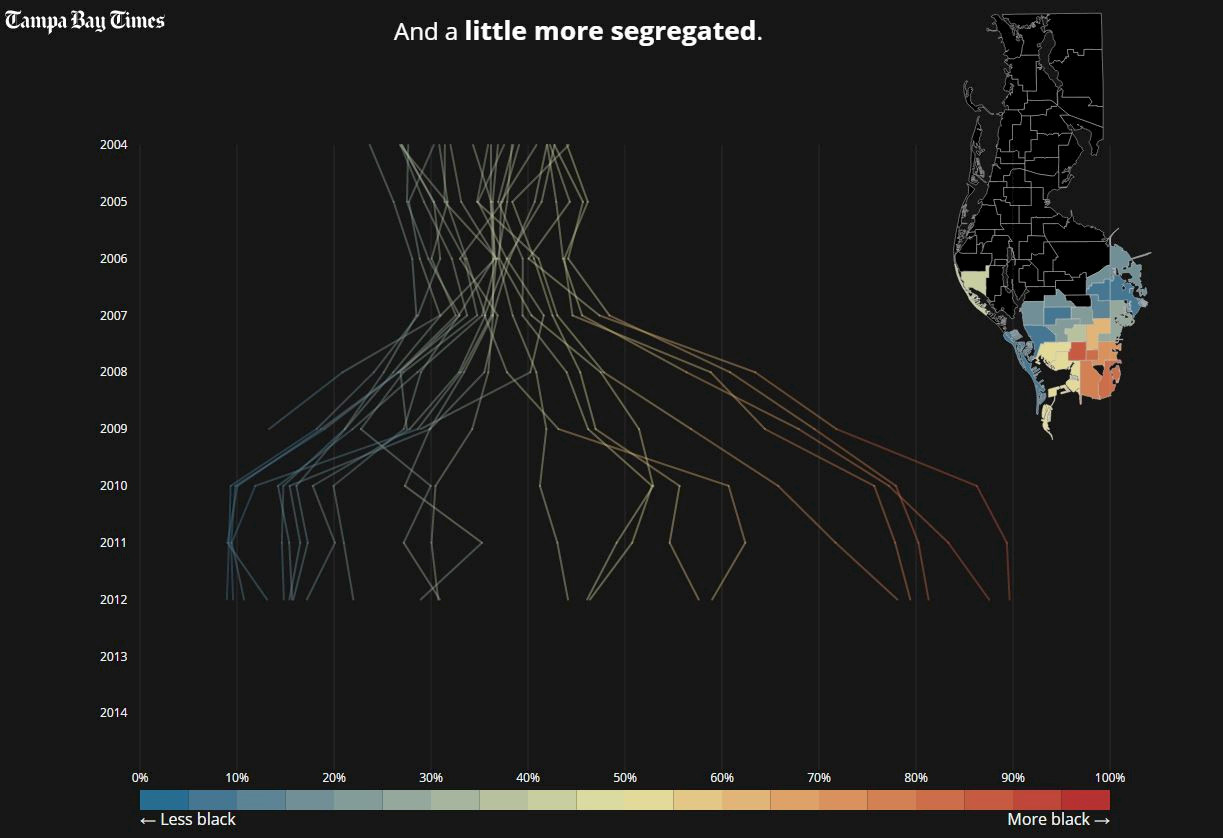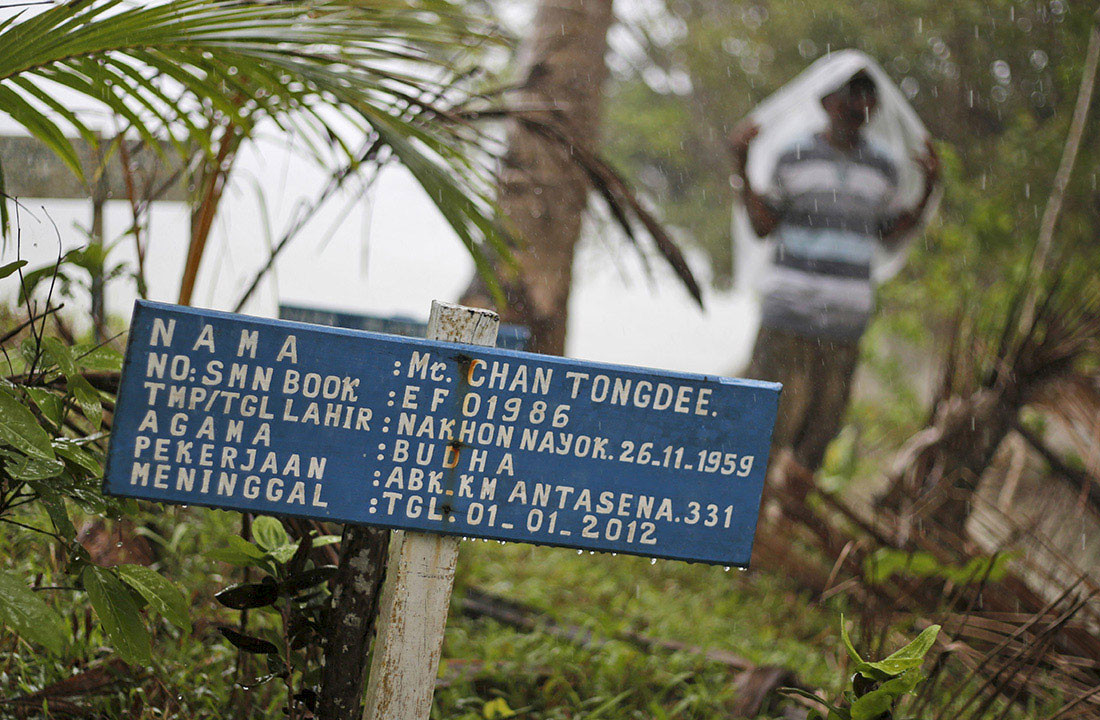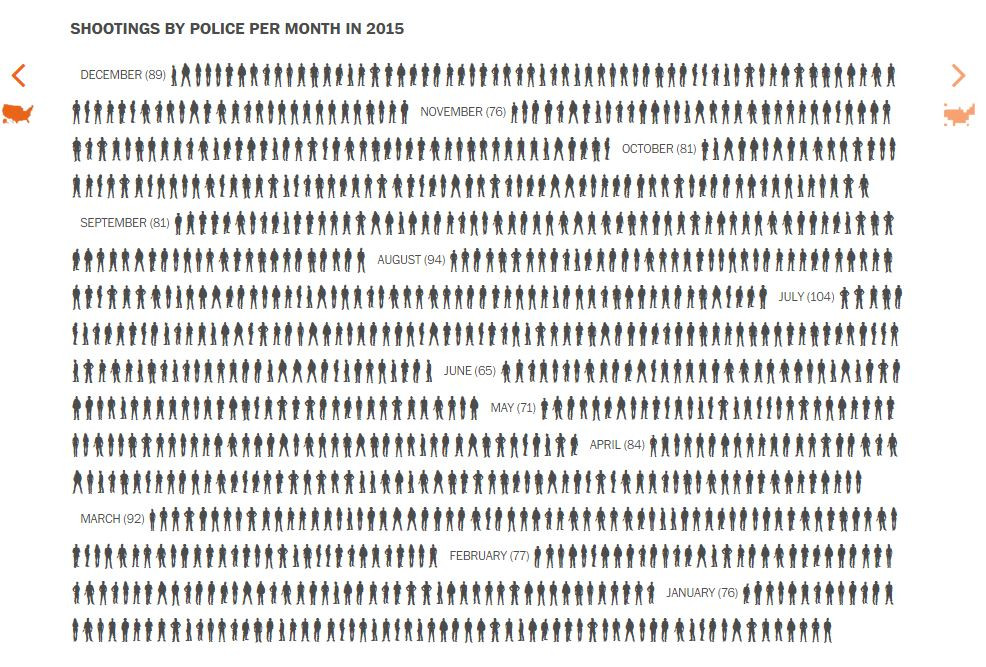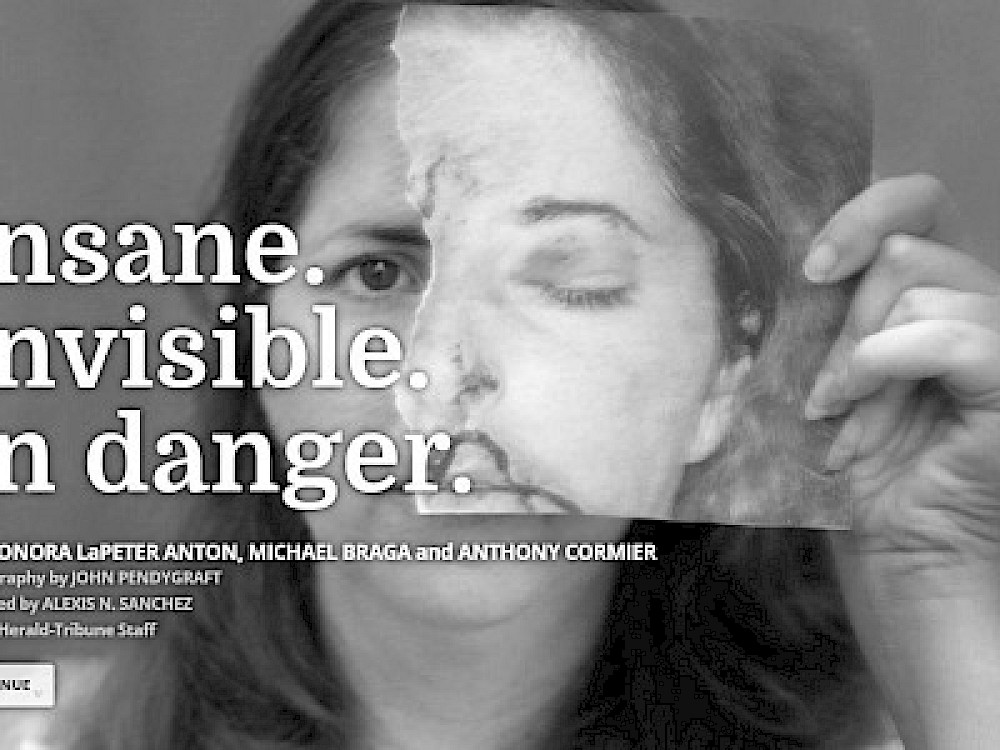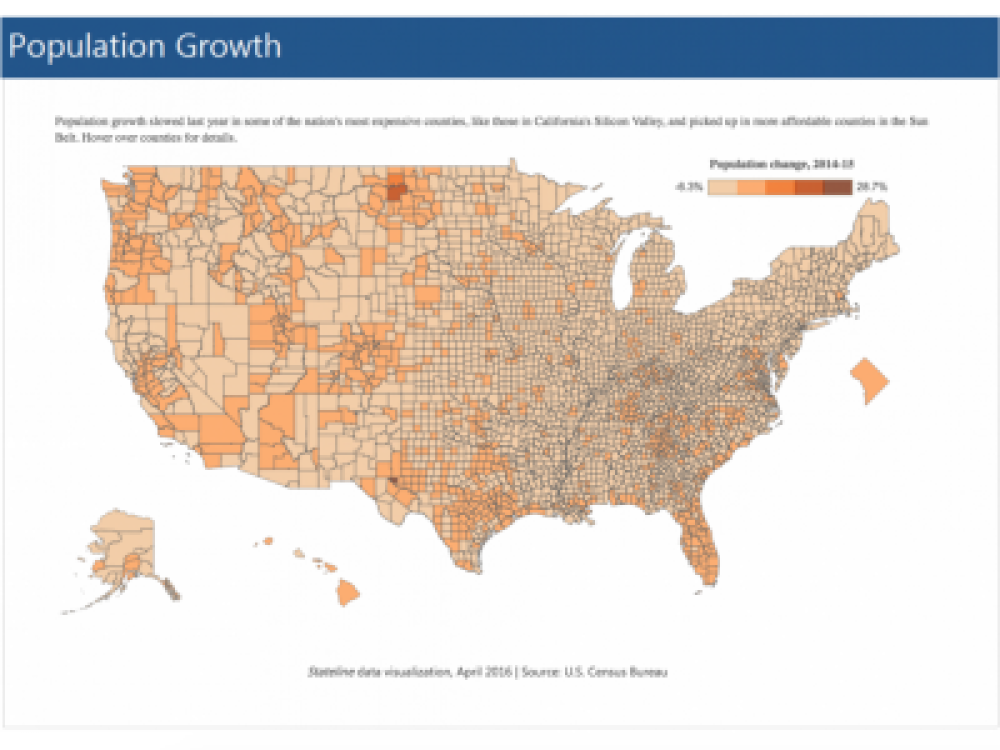The Pulitzer Prizes were announced in New York yesterday to recognise the best US journalism of 2015. In the 100th year of the contest, 14 prize categories covered news and non-fiction coverage including photography, criticism and commentary. Below are some examples of the powerful multi-media and data-based storytelling that were recognised yesterday.
Investigative Reporting
The Tampa Bay Times and the Sarasota Herald-Tribune won the prize for investigating conditions in Florida's state-funded mental hospitals. The hard-hitting report Insane. Invisible. In Danger links severe budget cuts and official neglect to the creation of "treacherous warehouses where violence is out of control and patients can’t get the care they need".
Local Reporting
The Tampa Bay Times won the local reporting category for a series of investigations exposing a local school board's culpability in turning some of the county poorest schools into failure factories with tragic consequences for the community. Some of the reports include:
Failure Factories (11 Aug 2015): an interactive graphic on the worst performing school in Pinellas County that also links the school board's abandonment of integration policies to the creation of highly segregated and deprived schools.
For 31 kids, this is what it’s like to go to resegregated schools (1 Sept 2015): Inside five of the worst schools in Florida, children tell a story of fear, failing and a certainty that something better must be out there.
Public Service
Associated Press won the prize for public service for their Seafood from Slaves investigation. For over a year, a team of four reporters uncovered systematic abuse in the Southeast Asian seafood industry. The interactive multimedia report revealed how men are kept caged on a "slave island" in the service of a $7 billion annual export industry. It also tracked slave-caught fish through the global supply chain to the supermarkets of the US and Europe. The report led to the release of more than 2,000 enslaved fishermen and prompted reaction from governments and food corporations.
GRAVEYARD: A jungle graveyard entombs dozens of fishermen, buried under fake names – leaving them invisible, even in death. (AP Photo/Dita Alangkara)
Breaking News Photography
The award was shared by The New York Times and Reuters for a series of photographs depicting the life and death struggles of refugees attempting to gain asylum in Europe.
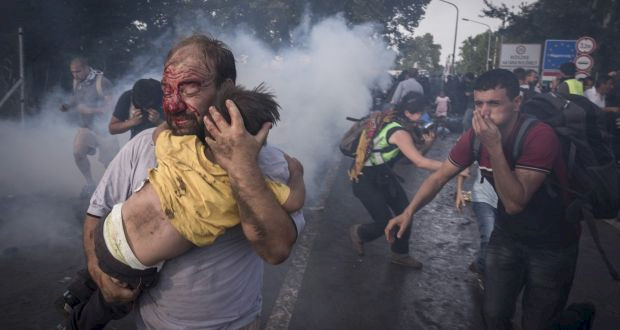
A refugee shields a child from tear gas during a clash with Hungarian riot police at the Serbian border on 16th September 2015. Photograph: Sergey Ponomarev - The New York Times
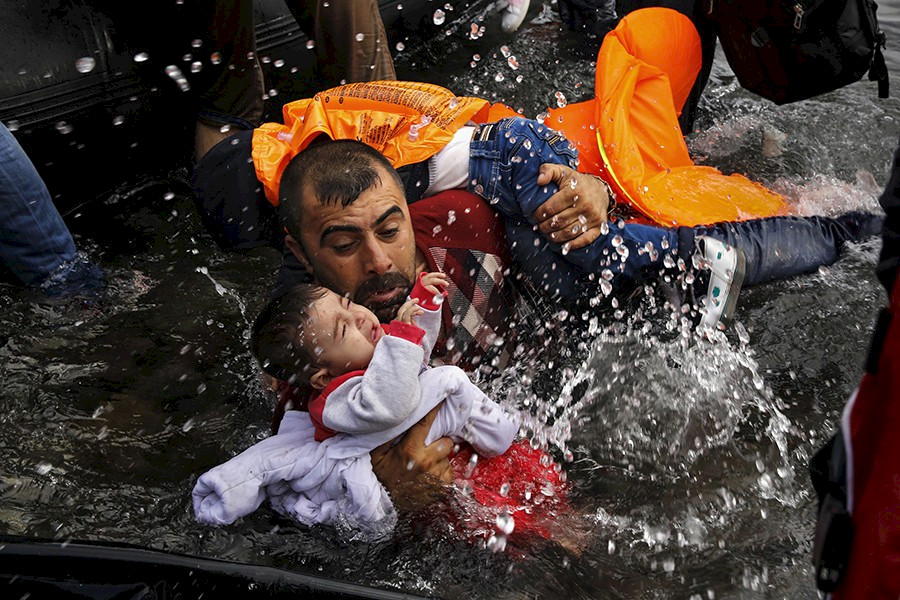 A Syrian refugee struggles to hold onto his children after arriving on dinghy at the Greek island Lesbos on 12th August 2015. Photograph: Yannis Behrakis, Thomson Reuters.
A Syrian refugee struggles to hold onto his children after arriving on dinghy at the Greek island Lesbos on 12th August 2015. Photograph: Yannis Behrakis, Thomson Reuters.
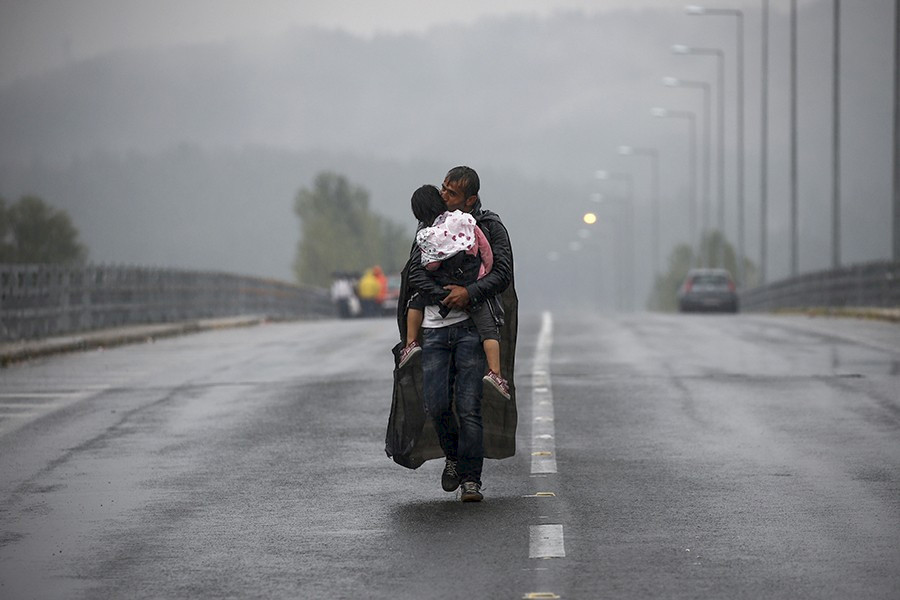 A Syrian refugee kisses his child as walks towards the Greek-Macedonian border, near the Greek village Idomeni on 10th September 2015. Photograph: Yannis Behrakis, Thomson Reuters
A Syrian refugee kisses his child as walks towards the Greek-Macedonian border, near the Greek village Idomeni on 10th September 2015. Photograph: Yannis Behrakis, Thomson Reuters
International Reporting
Alissa J Rubin, The New York Times, won for the prize for a five-part series chronicling the abuse and injustice faced by women in Afghanistan. Some of her reports include:
Flawed Justice After a Mob Killed an Afghan Woman (25 Dec 2015): At first, the trial and convictions in thedeath of Farkhunda Malikzada seemed a victory in the long struggle to give Afghan women their due in court. But a deeper look suggests otherwise.
A Thin Line of Defense Against ‘Honor Killings’ (2 Mar 2015): Women’s shelters are one of the most provocative legacies of the Western presence in Afghanistan.
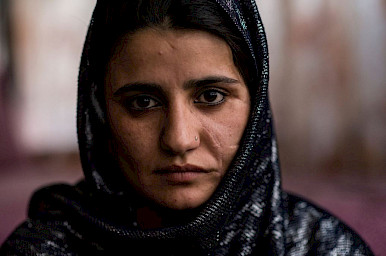
National Reporting
The Washington Post was awarded for the prize for creating an interactive database to analyse and report police shootings. The database is based on news reports, public records, Internet databases and original reporting. The report found that on-duty police officers shot and killed 990 people across the US in 2015. Unarmed black men were seven times more likely than unarmed white men to die at the hands of police officers. More than 50 of the police officers in the database had killed someone before.
See the full list of prize winners.
Interested in Data Journalism? Register for FuJo’s Getting Started With Data Journalism Course in May.
Subscribe to FuJo’s Monthly Newsletter
